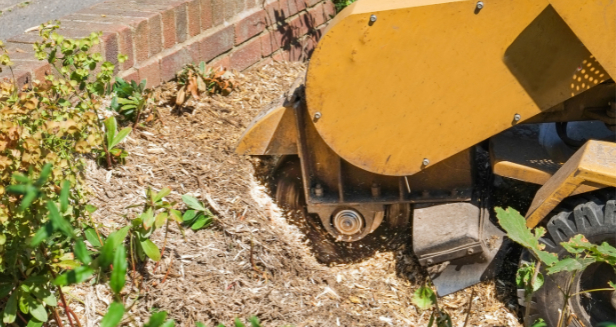Introduction: Trees are remarkable organisms that play a vital role in our environment. They provide us with oxygen, clean the air, and offer shelter to various wildlife. However, like all living things, trees are susceptible to diseases, and fungi are among the most common culprits. In this blog post, Tamworth Tree Surgeons will explore the fascinating relationship between trees and fungi and the role of fungi in tree health and surgery.
Fungi and Trees: A Symbiotic Relationship
- Mycorrhizal Associations: Fungi and trees often engage in mycorrhizal associations, a mutually beneficial relationship where both parties benefit. In this partnership, the fungi attach themselves to tree roots, forming a network of mycorrhizal hyphae. These fine fungal threads extend into the soil, significantly increasing the tree’s ability to absorb water and essential nutrients, such as phosphorus and nitrogen.
- Decomposition: Some fungi form beneficial partnerships with trees, while others are decomposers. These fungi break down dead or decaying plant material, including fallen leaves, branches, and wood. By doing so, they contribute to the recycling of nutrients in forest ecosystems.
The Role of Fungi in Tree Health
- Nutrient Uptake: Mycorrhizal fungi enhance a tree’s ability to absorb essential nutrients from the soil, which is especially important in nutrient-poor environments. This improved nutrient uptake contributes to overall tree health and growth.
- Disease Resistance: Some fungi have evolved mechanisms to protect trees from harmful pathogens. Endophytic fungi, for example, inhabit the internal tissues of trees, producing compounds that deter or inhibit the growth of pathogens, helping to defend the tree against diseases.
Fungi as Tree Threats
While many fungi have positive roles in tree health, some can be detrimental and require the intervention of tree surgeons:
- Fungal Diseases: Trees can fall victim to fungal diseases such as oak wilt, Dutch elm disease, or chestnut blight. These diseases can weaken or kill trees, making it necessary for tree surgeons to assess the extent of infection and recommend appropriate treatments or removal.
- Root Rot: Root rot is a common fungal disease that affects tree roots and can lead to structural instability in trees. When root rot is suspected, tree surgeons may need to examine the tree’s root system, remove affected areas, and provide treatments to mitigate further damage.
Tree Surgery’s Role in Managing Fungal Issues
- Pruning and Trimming: Proper pruning and trimming practices can help improve air circulation and reduce moisture levels within a tree’s canopy, creating an environment less conducive to fungal growth.
- Diagnostics and Treatments: Tree surgeons are trained to identify fungal diseases and determine the best course of action. This may include treatments such as fungicide applications, crown thinning, or even tree removal when necessary to prevent the spread of disease.
- Preventative Measures: Tree surgeons can guide preventative measures to protect trees from fungal diseases. These may include improving soil drainage, avoiding overwatering, and selecting tree species that are less susceptible to specific fungal pathogens.
Conclusion: Fungi play a complex role in the health and vitality of trees. While some fungi form mutually beneficial relationships with trees, others can threaten their well-being. The expertise of tree surgeons is crucial in diagnosing, managing, and treating fungal issues to ensure the health and longevity of trees in our environment. Tamworth Tree Surgeons is committed to safeguarding trees and promoting their coexistence with fungi, contributing to a healthier and more sustainable ecosystem.
Call us on: 01827 214 496
Click here to find out more about Tamworth Tree Surgeons
Click here to complete our contact form and see how we can help with your tree’s needs.

